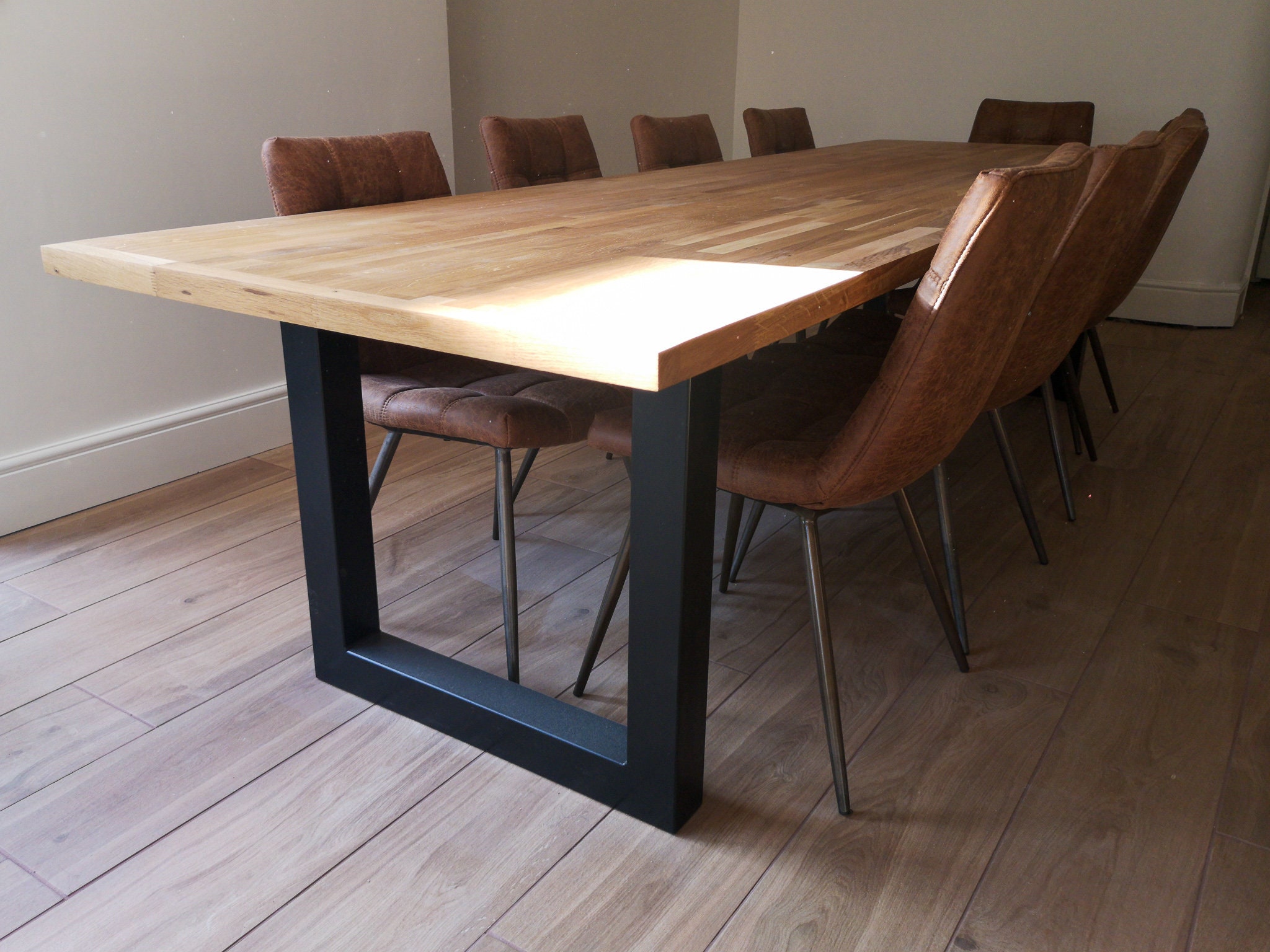Distinct Dining Room Table Legs to Change Your Eating Area
Distinct Dining Room Table Legs to Change Your Eating Area
Blog Article
A Detailed Look at Table Leg Styles: Locating the Perfect Suit
Selecting the best dining table leg design is critical for both aesthetic appeal and useful functionality. Traditional 4 legs supply timeless beauty and security, while the stand base provides enhanced legroom and a modern look. For those with bigger tables, trestle legs make certain sturdy support, whereas barrette legs present a mid-century modern-day ambiance with their minimal style. The x-shaped legs blend modern style with improved stability. Each of these choices brings distinct benefits, making the option greater than just a matter of choice. Discover better to uncover which style completely complements your dining space and lifestyle.
Typical Four Legs
Amongst the different types of eating table leg styles, the conventional four-leg design continues to be a classic option for many households. Four legs provide well balanced assistance, ensuring the table remains secure and capable of bearing considerable weight (dining room table legs).
From an aesthetic perspective, the traditional four-leg design can be conveniently adapted to numerous indoor styles. Whether crafted from timber, metal, or a combination of materials, these legs can be elaborately carved, streamlined and minimalistic, or anything in between. Their flexibility allows them to match both rustic and contemporary settings perfectly.
Moreover, the simple framework of the four-leg layout facilitates simplicity of movement and placement within a space. Unlike more facility bases, this style minimizes blockages, supplying adequate legroom for restaurants. In summary, the conventional four-leg dining table leg style weds enduring beauty with practical capability, making it a sharp selection for those seeking both form and feature in their dining furniture.
Stand Base
Usually celebrated for its classy and space-efficient design, the pedestal base is a distinguished alternative to the typical four-leg configuration in table leg styles. This distinct base usually features a solitary main column sustaining the tabletop, which can differ in kind, from ornately sculpted wood to streamlined, modern metal. One of the key advantages of the stand base is its capacity to take full advantage of legroom and seating versatility. Without corner legs, diners are paid for better freedom of activity, making it an excellent option for round and oblong tables that advertise even more intimate and inclusive gatherings.
In addition, the pedestal base's main support can take care of significant weight, enabling making use of heavier table tops, such as marble or thick hardwood. This strength coupled with its aesthetic adaptability makes the pedestal base a popular option in both standard and modern indoor settings. It can effortlessly integrate with different style motifs, from timeless elegance to minimal modernity. Moreover, the main column itself supplies a canvas for elaborate designs and artistic expressions, adding an aspect of visual rate of interest underneath the table. In recap, the pedestal base integrates functionality snappy, making it a refined and sensible choice for diverse dining environments.
Trestle Legs
Trestle legs offer a durable and classic foundation for dining tables, defined by their horizontal cross-bracing and strong support light beams. Originating from medieval times, this style has evolved yet kept its crucial structure, making it a perennial favorite in both traditional and modern settings. The main trestle beam of light, frequently sustained by two or more upright posts, supplies remarkable security, allowing for bigger table sizes without the requirement for added legs.
A significant benefit of trestle leg tables is the sufficient legroom they supply. Unlike tables with 4 corner legs, the lack of obstructions at the table's edges provides unobstructed area for chairs and restaurants, enhancing comfort and ease of access. This makes trestle tables optimal for suiting bigger celebrations, whether in a dining-room or a reception hall.
The visual flexibility of trestle legs is significant. Readily available in a selection of materials such as timber, metal, and composite, they can be ended up to enhance a variety of indoor styles. From rustic farmhouse to streamlined modern-day styles, trestle legs can be customized to suit specific tastes. Their enduring allure and practical benefits make trestle legs an engaging selection for those looking for both style and usefulness in their dining table.
Hairpin Legs

The allure of hairpin legs lies in their simpleness and convenience - dining room table legs. Available in a series of materials, consisting of steel and brass, they can be completed in numerous colors to complement various interior designs. Whether combined with a rustic wooden table top or a contemporary glass surface, hairpin legs effortlessly blend functionality with a touch of vintage appeal
Resilience is another noteworthy feature of hairpin legs. In spite of their delicate look, these legs are engineered to birth significant weight, making certain the table remains steady and protected. Additionally, they are reasonably very easy to set up, making them a prominent option for DIY enthusiasts and specialist furnishings makers alike.
X-Shaped Legs

Created from products such as steel, wood, or a mix of both, X-shaped legs can be tailored to match numerous design preferences. Steel legs typically lend a sleek and industrial feel, suitable for loft-style homes and modern eating rooms.
Moreover, the design navigate to these guys behind X-shaped legs makes sure also weight circulation, minimizing the danger of wobbling and improving resilience. This makes them especially appropriate for larger table that require extra assistance. In significance, X-shaped legs blend practical design with modern aesthetics, making them an ageless choice for varied dining environments.
Verdict
A comprehensive understanding of table leg designs reveals the unique qualities and benefits of each style. Typical four legs offer stability and timeless charm, while pedestal bases supply legroom and a streamlined appearance. Trestle legs Continued make certain durable assistance for larger tables, and barrette legs present a mid-century modern-day aesthetic. X-shaped legs integrate modern style with improved security. Choosing the proper leg design guarantees both practical and visual satisfaction in any type of eating room.
Report this page